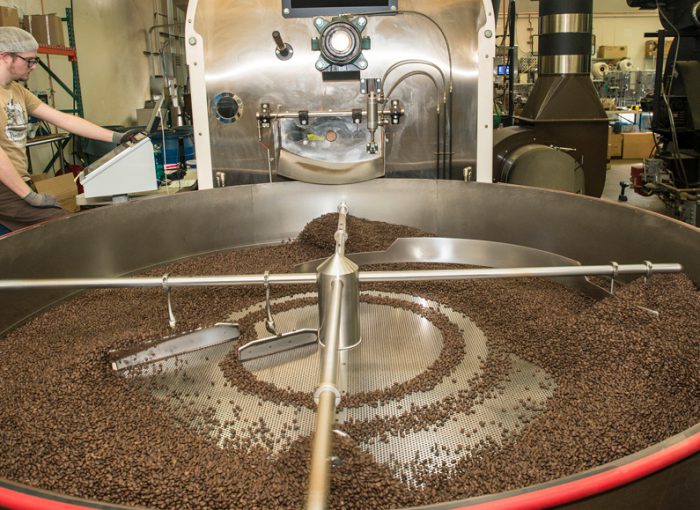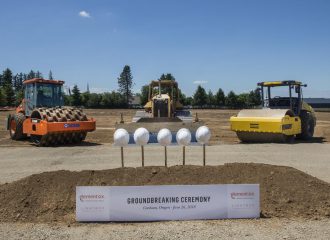You probably know how local options like Portland Roasting Coffee make Portland International Airport unique. Now learn about green leadership.
This month we interviewed Zac Benjamin, senior account manager with Portland Roasting Coffee, discussing its past, present and future of sustainability.
How did Portland Roasting Coffee get started with sustainability?
The company was founded in 1996, and in its first few years adopted the United Nations Millennium Development Goals as principles in business planning. This has now evolved to the 17 sustainable development goals adopted by the U.N. in 2015.
What’s a local example reflecting your commitment?
We’ve focused our attention to Goal 6: Clean Water and Sanitation. Our headquarters in industrial southeast Portland now has an expanded tasting room. Near the new storefront is a City of Portland bioswale designed to capture and treat stormwater. Our store has adopted the garden for maintenance, and we will add new plants in a few weeks. The city relies on partnerships like these to maintain rain gardens, and we are happy to do our part.
How are you improving the environment where coffee is grown?
We source our coffee from all over the world, and build partnerships where we can to improve communities. For example, we are working with a village in Columbia to build a network of sanitation facilities, and we have another project in Tanzania. Community engagement is important to us and we partner with our nonprofit arm Portland Global Initiatives to do this work.
What are some new projects on the horizon?
Since 2007, we’ve looked at how to reduce our emissions to become carbon neutral. To do so, we’ve minimized energy use and purchased renewable energy certificates. But we want to move more local. So, we partnered with Cool Energy to invest in recovery heat generator technology. This project will allow us to pull in heat from our large industrial scale roasters to generate electricity. We expect to test the technology in the next year, and if we can scale across our facilities, we’ll generate more electricity than we need. There will be a testing period, as this is the first time this technology is being applied to a coffee roaster. For example, having air flow attuned to the roaster is critically important. There are also ebbs and flows to roaster operation.





